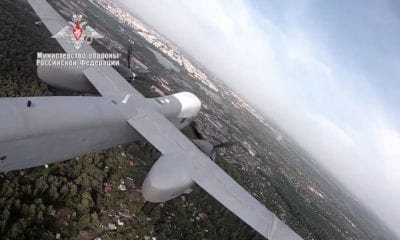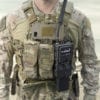
News
Trust By Design: Report Aims to Realign Policies for Medium and Large UAVs
Let’s face it – the policies and standards that were ruled in favor of unmanned aerial vehicles (UAVs) and drones definitely put us closer to the high potential of this technology. In times when drones are gaining more and more freedom – and are used in a variety of fields – there must be new legislative policies being submitted, reviewed and officialized by every country.
When Technology Begins To Be Widely Accepted, Certain Regulations Must Be Applied
This is exactly what a new report by Matthew Rice, a student at the Naval War College in Newport, RI is all about. The report is named “Unmanned Aircraft, Reliability, Trust, PLOA” and was submitted as a United States Marine Corps Major.
As the author of the report states in the beginning:
“Reliability is a key building block of trust. Trust in a capability can be accumulated and built upon through demonstration of a capability over time. However, trust in a machine starts with the standards that it is designed and built to. When a technology graduates from the experimental phase and begins to be widely accepted, regulations must be applied to ensure the necessary level of quality and reliability exist to accommodate the further growth of the technology.”
Three Reasons Why The Current UAS Policies Are Insufficient (And Should Change Soon)
Touching the ground on the current standards, the author also states that the current policies allow UAS programs the ability to choose to save development costs and schedule by accepting the reduced levels of safety and reliability – all at the expense of higher life cycle costs resulting from higher attrition rates.
Therefore, Rice thinks that the current UAS policies are insufficient for three reasons:
- The low reliability requires UA’s to be restricted to airspace that prevents overflight of populated areas. Restricting the airspace that UA’s can train in has inhibited the development and employment of the full capabilities of medium to large UA’s, negatively affecting the trust in UA’s by the operators, supported entities, and adjacent units.
- The low reliability airframe does not make fiscal sense considering the current trend of increasingly 2 costly payloads.
- The low reliability creates an unnecessary strain on the personnel and resources of units which operate UA’s that are not easily replaced and require investigations after each loss.
What seems obvious right now is the fact that drones and UAVs have reached a point of maturity and obtained a depth of saturation within the society. For this, different facets of the technology need to be reviewed and properly addressed in a new set of legislations.
Trust – The Key Question That Needs To Be Confronted
Matthew Rice also describes the full rise of drones from an early project to their massive use right now.
One of the key questions that need to be confronted, according to Rice, is trust. As a complex concept, trust can be affected by two key factors – in this case – the reliability of drones and their demonstration of capability.
“In order to determine the required degree of trust necessary for a machine to fulfill a given function, a series of three basic questions must be asked and answered:
- What is the importance of the task required of the machine?
- How important is it that the machine is able to complete the task without failure?
- How important and what is the likelihood that the machine is able to complete the task under a designated set of conditions while ensuring that it doesn’t do some other thing?” Rice wrote.
The detriment of trust and many other factors are fully explained by Rice in the report.
Further Recommendations To Be Considered
At the end of the report, Rice touches three points that must be addressed in order for new policies to be established. According to him, there must be a new Department of Defense-wide policy for drones and their flight hours.
Such policy would definitely allow UAVs to fly in the areas where they need to, without going over populated areas or conflicting with other technologies. Lastly, in addition to higher reliability to safely operate over people on the ground, drones need greater access to the US national airspace facilities – all in order to ensure safe integration of manned and unmanned aircraft.
In the end, while this is only a report for a College Major, it definitely serves as a great roadmap that authorities need to be review and analyze in detail. In most of the cases, reports like these are the best starting point towards new policies, standards and certifications in such emerging technologies.
Reference: http://www.dtic.mil/docs/citations/AD1057673























